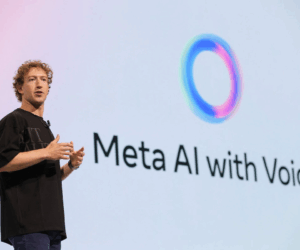Artificial Intelligence (AI) is a powerful tool that enhances leadership rather than replaces it. It exposes the shortcomings of those who are unprepared.
In today’s fast-paced environment, effective leadership requires agility, foresight, and emotional intelligence.
When leveraged correctly, AI can significantly strengthen leadership abilities in five crucial areas: Strategy, Tactics, Relationships, Accountability, and Mindset. Embracing AI empowers leaders to navigate challenges with greater effectiveness and vision.
Strategy
In today’s fast-paced business landscape, it is essential for leaders to harness artificial intelligence to simulate complex decision-making scenarios ahead of implementation.

By tapping into the power of AI, leaders can obtain vital insights that allow them to anticipate and thoroughly understand potential people-related risks, extending well beyond traditional concerns like revenue fluctuations.
This proactive strategy equips leaders to identify and address issues before they escalate, ultimately cultivating a more resilient organization.
Automating status updates is a powerful strategy that frees up valuable time for leaders. Instead of spending hours on mundane data collection, they can shift their focus to more impactful activities like mentoring and coaching their team members.
This transformation is vital for elevating the quality of leadership engagement and fostering a motivated, high-performing workforce that drives exceptional business results.
By embracing AI in their management practices, leaders can create a dynamic and responsive team environment that consistently delivers outstanding outcomes.
Tactics
Training managers to effectively interpret feedback generated by AI systems is crucial for maintaining a balanced leadership approach. Managers must learn to leverage AI insights without becoming overly dependent on technology; human judgment must always lead decision-making processes.
Organizations must establish clear guidelines outlining the appropriate uses of AI to foster an environment that prioritizes human-centered values and ethical considerations in leadership. It’s imperative that these practices are put into place to ensure sound decision-making and effective management.
Conducting regular audits to evaluate the technology friction encountered by teams is not just beneficial, it is essential.
These assessments will pinpoint whether AI solutions are genuinely addressing challenges and delivering value or if they are complicating processes and adding unnecessary obstacles.
By actively monitoring the effectiveness of AI integration, leadership teams can make informed adjustments, ensuring that technology unequivocally enhances productivity and strengthens team dynamics, rather than detracting from them.
Relationships
Great leadership understands that emotional intelligence is an inherently human quality that can’t be handed off to algorithms or artificial intelligence.
While technology can certainly offer valuable insights and streamline processes, it should enhance and support the organization’s core mission, not overshadow it.
After all, it’s the human touch that truly drives connection and inspires teams to achieve greatness together.
Effective leaders know that authentic human connections are at the heart of great decision-making.
They recognize that technology should amplify our understanding, compassion, and empathy, not overshadow the essential interpersonal dynamics that fuel collaboration and uplift team spirit. When leaders embrace AI thoughtfully, they create a workplace where technology and human insight work hand in hand.
This approach paves the way for decisions that are not only informed but also deeply resonate with team members and stakeholders alike, fostering a more engaging and supportive environment.
Accountability
The integration of artificial intelligence in the workplace can sometimes lead to unintended consequences, such as eroding trust among team members and creating a state of chronic burnout that often goes unnoticed. While the adoption of AI may result in a noticeable increase in productivity, streamlining tasks and accelerating processes, there’s a significant risk that it can also diminish the development and engagement of individual employees.
When workflows become overly automated, the essential human touch may be sidelined, leading to a lack of personal interaction and oversight that is crucial for fostering a healthy work environment.
Furthermore, as responsibilities shift increasingly toward automated systems, employees may feel undervalued and disconnected, which can erode team cohesion and morale over time. Therefore, it is imperative that leaders actively monitor the impacts of AI on their teams. They must take responsibility for ensuring that the well-being of their workforce is prioritized, maintaining open lines of communication and providing support when needed. By doing so, leaders can help mitigate the risks associated with over-automation and cultivate a more resilient and engaged workforce.
Mindset
The leadership mindset has undergone a significant transformation in recent years, evolving from a narrow focus to a far more expansive and strategic approach. Initially, as businesses began to integrate artificial intelligence into their operations, leaders fixated on the question, “What can AI do for us?”
This focus demonstrated a strong interest in uncovering the functionalities, advantages, and potential applications of AI within their organizations.
Decision-makers recognized the need to thoroughly understand not only the technical capabilities of artificial intelligence but also its potential to enhance operational efficiency, improve decision-making, and drive innovation.
As leaders have developed a more sophisticated understanding of AI’s role, they are now actively engaging with a wider array of critical questions and implications. They recognize that AI will fundamentally reshape business models, influence company culture, and establish competitive advantages in an ever-evolving marketplace.
This shift underscores the acknowledgment of AI not just as a tool, but as an essential element of strategic planning and a key driver of long-term success.
As technology and decision-making continue to evolve, we find ourselves asking a more intricate question: “Which decisions truly deserve my insight, and which ones can AI handle with ease?”
This shift in focus invites us to explore the balance between human intuition and the power of artificial intelligence.
Effective leaders understand the undeniable importance of their unique judgment and expertise in the decision-making process.
They recognize that while AI excels at processing vast amounts of data and delivering valuable insights, certain decisions require human intuition, moral judgment, and creativity.
By clearly identifying these critical areas, leaders can leverage AI as a powerful supportive tool rather than allowing it to overshadow their decision-making authority.
A balanced partnership between human leadership and AI enhances strategic thinking and emotional intelligence.
By utilizing AI for data processing, predictive analytics, and routine decision-making, organizations can create a more effective and adaptive environment.
This collaboration enables leaders to focus on higher-level thinking while leveraging technology to streamline operations.
Conclusion
In today’s rapidly evolving digital landscape, artificial intelligence (AI) has emerged as a transformative tool that significantly enhances leadership capabilities. By utilizing AI, leaders can adopt a more strategic and tactical approach, enabling them to swiftly analyze vast amounts of data and make informed decisions that contribute to organizational success. Furthermore, AI supports the development of emotional intelligence, equipping leaders to better understand and respond to the needs and sentiments of their teams.
The Integration of AI brings a powerful sense of accountability to leadership. With data-driven insights at their fingertips, leaders can effectively monitor performance and outcomes, paving the way for a culture of transparency where decisions are backed by solid evidence.
Yet, it’s essential to remember that AI shouldn’t overshadow the essential qualities that make leadership truly effective. At its core, authentic leadership is all about inspiring, motivating, and forging deep connections with people on a human level. Balancing data with that human touch is where the real magic happens!
As we venture into the future, the most impactful leaders will be those who skillfully blend AI tools with their unique leadership style, all while preserving the vital human touch in decision-making.
This harmonious blend will not only equip leaders to tackle intricate challenges but also cultivate a thriving, collaborative atmosphere where technology and humanity can flourish side by side.











